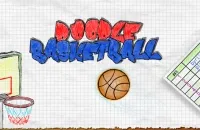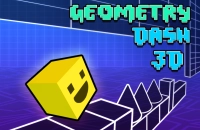Atari Breakout
Atari Breakout
Connecting to game server...
0% complete

Atari Breakout
Click to start playing
🕹️ You May Also Like












Atari Breakout
The pioneering brick-breaking arcade classic using paddle and ball physics. Destroy colorful blocks and control ball angles with paddle positioning.
Atari Breakout is the pioneering brick-breaking arcade game that inspired countless clones. Control your paddle to bounce the ball and destroy all the colored blocks above. As you break more blocks, the ball speeds up, increasing the challenge. Different colored blocks may have different point values, and clearing all blocks advances you to the next level with new patterns and increased difficulty.
🎮 How to Play
- 1Move mouse to control paddle
- 2Paddle bounces ball toward blocks
- 3Keep ball in play at all costs
💡 Game Tips
- 💡Aim for the corners to create openings
- 💡Control ball angle with paddle position
- 💡Don't let the ball get past your paddle
- 💡Target blocks strategically for better angles
📚Complete Strategy Guide
Master Atari Breakout with our comprehensive guide and pro tips
Basic Strategy
Atari Breakout pioneered the brick-breaking genre by combining simple physics mechanics with strategic depth that rewards understanding of ball trajectory, paddle positioning, and systematic block elimination approaches. Success requires mastering ball control through paddle manipulation while developing systematic strategies for efficient level completion.
Physics Understanding: The game operates on basic physics principles where ball angle reflects off surfaces predictably. The paddle position at contact determines reflection angle, allowing players to direct balls toward strategic targets. Understanding these physics enables intentional ball placement rather than random bouncing.
Paddle Control Mastery: The paddle's position and movement at ball contact determines subsequent ball trajectory. Learning to use different paddle zones (center for straight shots, edges for angled shots) provides precise control over ball direction and enables strategic targeting.
Systematic Elimination: Rather than randomly breaking blocks, develop systematic approaches that maximize efficiency and minimize risk. This includes prioritizing certain block patterns, creating strategic openings, and managing ball speed as levels progress.
Speed Management: As blocks disappear, ball speed typically increases, requiring adjusted paddle positioning and faster reaction times. Anticipating speed changes and adapting control sensitivity prevents performance degradation as levels become more challenging.
Risk Assessment: Every shot involves risk-reward calculations. Aggressive shots that target difficult areas offer higher rewards but greater risk of losing the ball. Conservative play maintains safety but may require more shots to complete levels.
Pattern Recognition: Breakout levels often follow predictable patterns in block layout and color scoring. Recognizing these patterns enables strategic planning and optimal elimination sequences that maximize scoring efficiency.
Advanced Tips
Angle Manipulation: Master using different paddle positions to create specific ball angles. The paddle edges produce sharp angles useful for reaching difficult spots, while center contact creates more predictable straight shots.
Side Wall Usage: Use side walls strategically to redirect balls toward target areas. Understanding how walls affect trajectory enables complex shots that reach blocks unreachable by direct paths.
Multiple Ball Management: In versions with multiple balls, develop skills for tracking and controlling several balls simultaneously. This includes positioning for optimal paddle coverage and prioritizing which balls to focus on saving.
Block Priority Strategy: Learn which blocks to target first based on scoring value and strategic position. High-value blocks and those that open access to unreachable areas should generally receive priority.
Momentum Conservation: Maintain ball momentum when possible rather than letting balls slow down through paddle center hits. Keeping balls active reduces the chance of losing them and maintains scoring pace.
Paddle Edge Techniques: Advanced paddle edge usage can create extreme angles that access otherwise unreachable blocks. Practice these techniques to handle levels with challenging block configurations.
Prediction Skills: Develop ability to predict ball trajectory several bounces ahead, enabling better positioning and strategic planning for subsequent shots.
Level Walkthrough
Level Assessment: Begin each level by analyzing block layout, identifying high-value targets, potential problem areas, and optimal elimination sequences before starting play.
Opening Strategy: Use initial shots to establish favorable ball patterns while targeting accessible high-value blocks. Opening moves often determine the level's overall difficulty and scoring potential.
Systematic Clearing: Work through blocks methodically, creating openings that enable access to protected areas while maintaining ball control and speed management.
Difficult Area Access: Develop specific techniques for reaching isolated blocks or challenging configurations that remain after general clearing operations.
Speed Adaptation: As ball speed increases throughout the level, continuously adjust paddle sensitivity and positioning to maintain control without losing tracking ability.
Final Block Strategy: End-game situations often require patience and precision to clear final blocks without losing the ball. These moments test all accumulated skills under maximum pressure.
Common Mistakes
Paddle Overcorrection: Making large paddle movements that overshoot target positions, causing missed balls or poor angle creation. Smooth, controlled paddle movement provides better results than frantic corrections.
Center Reliance: Exclusively using paddle center for ball contact, limiting angle options and strategic shooting ability. Learning edge usage dramatically expands tactical possibilities.
Random Targeting: Hitting blocks without strategic consideration of scoring value, access creation, or future ball positioning. Random play produces inconsistent results and misses optimization opportunities.
Speed Panic: Becoming overwhelmed by increased ball speed and abandoning strategic paddle positioning in favor of desperate reaction attempts. Maintaining systematic approach works better than panic responses.
Wall Ignorance: Failing to utilize wall bounces strategically, missing opportunities for complex shots that reach difficult block configurations.
Impatience: Rushing shots instead of waiting for optimal positioning, leading to poor angles and missed opportunities for strategic block elimination.
Score Optimization
High-Value Targeting: Prioritize blocks with higher point values when strategic situations allow. Understanding scoring systems enables optimization decisions between safety and aggressive scoring.
Elimination Efficiency: Complete levels in fewer shots by planning elimination sequences that maximize blocks cleared per ball contact. Efficiency translates directly to scoring advantages.
Streak Maintenance: Maintain consecutive level completion streaks by balancing aggressive scoring with survival priorities. Streak bonuses often provide significant scoring multiplication.
Speed Bonus: Many versions reward faster completion times. Balance speed with accuracy to optimize time bonuses without sacrificing completion reliability.
Perfect Clear Attempts: Attempt to clear levels without losing any balls when skill level permits. Perfect performance often receives significant scoring bonuses.
Strategic Patience: Sometimes waiting for optimal shot opportunities produces better long-term scores than taking immediate but suboptimal shots.
Final Pro Tips
Physics Practice: Spend time understanding ball physics through experimentation with different paddle positions and angles. This foundational knowledge enables all advanced techniques.
Variant Experience: Play different Breakout variants and clones to develop broader skills and understanding of genre conventions that transfer back to classic Breakout.
Reaction Training: Use Breakout as training for general gaming reflexes and hand-eye coordination skills that benefit performance in many other gaming contexts.
Pattern Documentation: Keep mental notes about effective strategies for common block patterns and configurations to accelerate decision-making in similar future situations.
Equipment Optimization: Use input devices that provide precise, responsive control for paddle movement. Hardware limitations can artificially constrain performance potential.
Historical Appreciation: Understanding Breakout's place in gaming history and its influence on subsequent games deepens appreciation for its elegant design principles.
Cross-Training: Skills developed in Breakout - trajectory prediction, timing, strategic planning - transfer effectively to many other arcade and action games.
Community Engagement: Connect with Breakout communities to learn advanced techniques, compete in challenges, and share strategies with other dedicated players.
Mindfulness Application: Use Breakout sessions as mindfulness practice, focusing completely on ball tracking and paddle positioning while setting aside external distractions.
Progressive Challenge: Structure practice to gradually tackle more difficult levels and variants as skills develop, ensuring continuous challenge and improvement.
Teaching Others: Teaching Breakout strategies to others reinforces your own understanding while developing communication skills for strategic explanation.
Long-Term Perspective: View Breakout mastery as ongoing skill development that provides enduring challenge and satisfaction through continuous refinement of techniques.
Stress Management: Develop techniques for maintaining calm focus during high-pressure moments when ball speed is high and precision is critical for level completion.
Adaptation Skills: Learn to quickly adapt strategies based on level-specific challenges rather than relying on single approaches that may not work in all situations.
Atari Breakout's lasting impact on gaming comes from its perfect distillation of strategic thinking into simple mechanics, creating a game that remains challenging and satisfying decades after its creation while establishing core design principles that continue to influence modern game development.